Goal setting is one of the most underrated success tools. When it comes to setting goals, a lot of people take it lightly and are not serious about it. They treat their goals with no commitment, and they don’t even consider writing down their goals, even when they know they should.
And this why I decided to write this ultimate guide on setting and achieving your goals. I want to inspire you to set empowering goals, be 100% committed to what you want to achieve, and then accomplish your goals using a proven system.
This ultimate guide is going to be thorough and detailed. You may want to bookmark this page and come back to it regularly.
Plus, I will also be constantly updating this page to make sure all the information listed here is up to date and always relevant.
With that said, I hope that after you go through this guide, you understand how goal setting works, learn how to set goals that you really care about, and you have a proven plan and know what you need to do to achieve them.
So, let’s get started…
What is Goal Setting?
If you truly want to master goal setting, you need to understand how it works. And that begins with answering the question: what is goal setting?
The theory of goal setting was first developed by Dr. Edwin Locke in the 1960s. It was based on the premise that human action is purposeful and intentional. And when we structured our actions and behaviors toward an objective or goal, we can greatly improve the performance and reach the results we desire.
But I’m not going to talk about the history of it because it will bore you down. Instead, I’m going to share with you why setting goal works.
In one of my articles, I said that goal setting is intention-setting.
When you set a goal, you are setting an intention for what you want. And because of that, you can then create a plan, make the decisions, and take conscious actions to produce the outcome you want.
On the other hand, when you have no goals or clear objectives in life, you don’t know what you want, and you will have no idea what to do. As a result, you will be drifting in the river of life, making unconscious decisions, going wherever the current leads you.
Anthony Robbins shared a powerful metaphor about having specific goals in life. In his best-selling book, Awaken the Giant Within, this was what he wrote:
Too many of us don’t make the majority of our decisions consciously… in so doing, we pay a major price. In fact, most people live what I call ‘The Niagara Syndrome’. I believe that life is like a river, and that most people jump on the river of life without ever really deciding where they want to end up. So, in a short period of time, they get caught up in the current: current events, current fears, current challenges.
When they come to forks in the river, they don’t consciously decide where they want to go, or which is the right direction for them. They merely ‘go with the flow’. They become a part of the mass of people who are directed by the environment instead of by their own values. As a result, they feel out of control.
They remain in this unconscious state until one day the sound of the raging water awakens them, and they discover that they’re five feet from Niagara Falls in a boat with no oars. At this point, they say, ‘Oh shoot!’. But by then it’s too late. They’re going to take a fall.
Sometimes it’s an emotional fall.
Sometimes it’s a physical fall.
Sometimes it’s a financial fall.
It’s likely that whatever challenges you have in your life currently could have been avoided by making some better decisions upstream.
Awaken the Giant Within is considered one of the must-read personal development classics. I strongly suggest you read the book. It changed the way I think, and it improved my life, and I believe the book will change your life too.
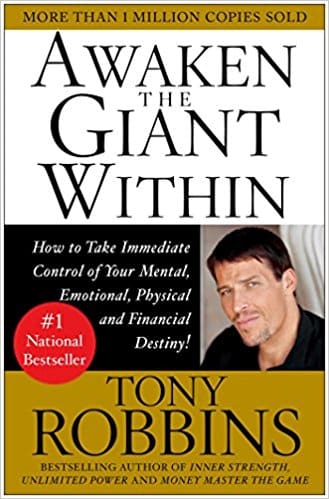
The Benefits: Why Do You Want to Set Goals
You have to understand the main function of setting goals – it is to bring your future to the present so that you can do something about it now, not 20 years from now.
The future you want is created today, not tomorrow.
And this is what makes goal setting such a powerful tool.
Just like a crystal ball, instead of predicting your future, setting goals allows you to create your future.
Yes, you are the one who can create your future. Whatever dream life you have, you can achieve it if you are willing to work on it right now.
It is a self-fulfilling prophecy. You see yourself achieving all the success you want, you feel good about it, and you start working on it, which eventually, leads you to the future you envisioned in the first place.
That’s what will happen when you set a goal and work toward it.
Below are 2 common scenarios where one person starts his day without an objective, while another starts with a clear goal:
Think about it, what will you do on a weekend when you have no plan and no goal? For instance, you will most likely wake up late. You will then waste a couple of hours checking Facebook and Instagram. You might also spend most of your time binge-watching Netflix or YouTube. And before you knew it, your weekend is gone just like that.
Now, what happens when you have a clear objective and you have a goal to accomplish? Say, you set a goal to finish reading a book you just bought over the weekend. When you wake up, you remembered your goal, so you get up straight without snoozing your alarm. You then make yourself a cup of morning coffee and start reding.
Can you see the difference? One person goes through his morning without a clear goal while another starts his day with a specific goal. And both have gone through a totally different morning because of the goal.
This is why you need to have goals.
Your goals determine your objectives. Your goals give you intention and direction. Your goals create the future you want.
In short, here’s why goal setting is important and the benefits that come along with it:
1. Goal allows you to better plan for the future you want.
As I have explained above, your future is created now, not 20 years from now. Hence, when you set goals, you are bringing your future to the now. You are creating the future you want at this present moment so that when the future comes, which it definitely will, you will arrive.
Like the “river of life” example given by Tony Robbins, when you know where you want to go, you can then make conscious decisions right now and make the right choices so that you will get to the destination you want.
Many people are living like lost sheep because they have no idea what they want out of their lives.
They follow wherever the crowd goes instead of following their heart and plan for the future that they want.
Never let this happen to you. Start making conscious decisions and make the future you want possible, starting with goal setting.
2. Goal makes you proactive rather than reactive.
Yes, when you know what you want to do, you become proactive and you don’t have to wait for things to happen to you.
Imagine if your goal is to start an e-commerce business selling computer gadgets. Now that you know what you want, so you can then dive in and work on it.
If you already have the technical know-how, you can then proceed to register a domain name, build your e-commerce website, and list your products, and start getting people to your website.
If you have no idea how to build a website, you can then start with learning how to do so or hiring someone to do it for you.
By all means, you know what you should do to progress toward your goal. It makes you proactive.
But if you don’t have a goal, you become reactive. Since you have no idea what you want, you will just wait for things to come to you. You will waste time playing games, binge watch Netflix and YouTube, checking updates on Facebook and Instagram, etc.
Until an idea or an intention or a goal lands on you, you will always be reactive by responding to your life.
This is the core benefit of having goals. When you know what you want to go, you can then work your way there.
You can’t get to your destination without knowing where you want to go in the first place.
3. Goal motivates you and inspires you to take action.
You want your goals to be exciting and motivating. Hence, don’t set something that you don’t feel inspired to achieve.
And one of the most common goals that most people set is none other than income goals. They set a goal like, “I want to make $10,000 per month by end of the year”, but little did they know that what they truly want is not the money, but what the money brings.
In my course, Goal Setting Formula, I mentioned that you need to make your goals meaningful and impactful. You can’t just blindly chase numbers. If you do that, you will never feel motivated because numbers are nothing but digits.
Think about it, what makes Billionaires like Elon Musk, Richard Branson, and Mark Cuban continue to work every day? Well, they are not inspired by monetary rewards because they are already a billionaire.
Instead, they are inspired by what their goals bring them. They associate a strong meaning with their goals and when you are doing something meaningful, you will be pulled by it.
Just like how Steve Jobs put it:
If you are working on something exciting that you really care about, you don’t have to be pushed. The vision pulls you.
Steve Jobs
Your goals are meant to be exciting and meaningful. They are meant to pull you. The drive should come from within.
Thus, set goals that excite you. Let your goals motivate you to achieve greater results and reach higher success in life.
4. Goal shows you the way and gives you direction.
Another important reason you want to set goals is that they can work as a lighthouse and give you the right direction.
There are so many things people want in life. And there are so many opportunities out there. If you are not focused, you will quickly forget about your goals and become distracted.
Your goals work like a north star, always showing you the direction you want to get to. And all you need to do is to work in that direction and eventually, you will get to the place you wanted to go.
I bet you have had the experience where you try something out but it didn’t work, and then you decided to jump ship and start another project.
Like in the internet marketing industry, people start a website and hope they can make it successful. But there are too many ‘shiny opportunities’ distracting them. After a few days or weeks when things don’t work out, they decide to start another website or try something else.
And it goes on and on. They continue to search for the ‘next big thing’ and continue to hope that things will work out for them.
Of course, if they have a goal and stick to their original project/plan in the first place, they would have succeeded.
Therefore, set goals and stick to them. Let your goals be your guide.
5. Goal allows you to pivot and measure the way
One of the key benefits of having a goal is that it allows you to pivot and measure yourself to your destination.
For instance, if you want to achieve success, having a goal forces you to be specific and make it measurable. And because it is measurable, it allows you to quantify your progress and understand your performance.
You can set a sales goal like to increase your sales by 20% for your company. And having this goal allows you to understand where you are and what you need to do to get there. In other words, your goal allows you to pivot your current condition and so you can work on your strategy to achieve the goal.
Without having the goal in the first place, you will never know where you are and where you want to go. Furthermore, you can’t tell if you are making progress and move forward or are moving backward.
This is why you need to have goals.
Long-Term Goals VS Short-Term Goals

By now, you know why goal setting is important. But where do you start? How do you set goals and make your life a better place?
Let’s start with long-term goal setting.
Long-term goals are targets that you plan to achieve over the long-term, for example, 5 years and above.
You want to have long-term goals so that you understand the big picture of where you’re going. Without having a long-term goal, you may work on anything that seems important but is not getting anywhere.
Think about driving at night. First, you need to identify your destination, which is a synonym for your long-term goal. And then because you are driving at night, you need to turn on your car’s headlight.
And the headlight allows you to see what is directly in front of you so that you can navigate safely in the dark. And this is like your short-term goals. You don’t need to see the entire journey, as long as you can navigate safely and drive in the dark with your headlights on, you can still make it to your destination.
Your destination is your long-term goal. Where do you want to go?
And the headlight that allows you to drive safely in your journey is your short-term goal. What do you need to do, and which way do you need to take to reach your destination safely?
Thus, you need both long-term and short-term goals.
Long-term goals are usually goals that are over 5 years, while short-term goals are goals that can range from days, weeks, months, and even up to a year or two.
There is no such thing as which one is more important than the other. I believe that you need both long and short-term goals in order to unleash your potential and achieve the best success.
Just like your hands and legs, which are more important to you? Well, both your hands and legs are important. So, use both your hands and legs to get to where you want.
How to Set Long-Term Goals

Long-term goals are your intention for the future. How do you see yourself living in the next 10 years? Where would you be? What will you be doing?
To help you identify your long-term goals, here are 2 strategies you can apply. By the way, I mentioned more techniques you can use to discover your vision or long-term goals in this article. You may want to check it out.
1. The $100 Million Question
This technique is simple and it is one of my favorite daydreaming techniques. Just ask yourself this question:
If you have $100 million in your bank account right now, what will you do?
Many people are pursuing money and financial freedom because they lack financial stability. Plus, they think that when they have all the money in the world, they can then go on to live the life they want.
Now, what if you take away the financial limitation and you’re allowed to live your perfect life at this instant? What if you have a hundred million dollars in the bank? What would you do?
You want to really daydream and think about all the possibilities. How are you going to live your life? What are you going to do with all the money? Below are some questions to consider:
- Are you going to distribute the money? How?
- Will you share a portion with your family members?
- Are you going to donate some to the charity?
- Now that you have $100 million, will you still work in the same company you used to work for?
- Are you going to start a business? What business?
- Will you take a vacation to Hawaii or visit Hokkaido in Japan?
- Will you visit the car showroom tomorrow and buy yourself your dream car?
- Are you going to start a blog and share with the world your travel experience?
- Do you want to become a YouTuber and an online celebrity?
- Will you continue to stay where you are or move to another city or remote location?
- Will you still cook yourself dinner because you love doing it or are you going to hire someone to do it?
The key is to get the financial constraint out of your life. People often don’t dare to dream or set big goals because they are not financially well off. And because they don’t dare to dream big.
They choose to think about their future based on their current situation. And this limits your potential.
So, imagine money isn’t an issue, what will you do? How will you live your life? How your future is going to be like?
Write down your answers or go to a local coffee shop, order your favorite mocha, enjoy your drink and daydream about your future.
This exercise helps you understand what kind of future and life you want to have.
2. Begin with the End in Mind
The second technique is about beginning with the end. It is about reverse engineering your life from the end to the now.
In his best-selling book, The 7 Habits of Highly Effective People, Stephen Covey shared this idea as one of the 7 habits. I recommend you read this book.
To show you how to begin with the end in mind, I want to share with you a real-life example of a highly successful entrepreneur who practiced this principle and went on to build a multi-billion dollars business empire. His name is Thomas Watson, the founder of IBM.
Here’s a speech from Thomas Watson where he explained how he began with the end in mind and brought IBM to a successful international business. I also shared this story in my article here.
IBM is what it is today for three special reasons. The first reason is that, at the very beginning, I had a very clear picture of what the company would look like when it was finally done. You might say I had a model in my mind of what it would look like when the dream — my vision — was in place.
The second reason was that once I had that picture, I then asked myself how a company which looked like that would have to act. I then created a picture of how IBM would act when it was finally done.
The third reason IBM has been so successful was that once I had a picture of how IBM would look when the dream was in place and how such a company would have to act, I then realized that, unless we began to act that way from the very beginning, we would never get there.
In other words, I realized that for IBM to become a great company it would have to act like a great company long before it ever became one.
From the very outset, IBM was fashioned after the template of my vision. And each and every day we attempted to model the company after that template. At the end of each day, we asked ourselves how well we did, discovered the disparity between where we were and where we had committed ourselves to be, and, at the start of the following day, set out to make up for the difference.
Every day at IBM was a day devoted to business development, not doing business.
We didn’t do business at IBM, we built one.
Speech from Thomas J. Watson
So, begin with the end. What end do you want to create?
Here’s a simple exercise: Take out a piece of paper or a notebook, and then write down 100 goals you want to achieve before you leave this world.
Again, spend time and write down the 100 things you want to be, do, and have in this lifetime. It may sound a little somber when you think about the end of life, but that’s it is a great method to reverse engineer and create the future you want, starting from now.
How to Set Short-Term Goals

Now that you have your long-term goals and you roughly what kind of future you want to create. It is time to turn your long-term goals into your short-term targets so that you can focus on them and work on them.
Just like the driving in the dark example that I shared above, once you have identified your destination (your long-term goals/future you want to create), you then need to focus on the road ahead with your headlamps (short-term goals).
So, how do you set a short-term goal? Use the SMARTER goal system.
I also shared about this in my training program, Goal Setting Formula. If you are serious about setting your goals, achieving them, and really change your life for the better, I suggest you take the course.
How to Set SMARTER Goals
To set SMARTER goals, you just need to remember these 7 key attributes:
S – Specific
M – Measurable
A – Actionable
R – Risky
T – Time bound
E – Exciting
R – Relevant
If you want to learn more about setting SMARTER goals, read my article below where I talked about this technique in full detail:
SMARTER Goals Setting: 7 Key Attributes of Powerful Goals
This is how it works…
1. S – Specific
Yes, you want to be specific with your goals. You don’t want to be vague.
When you give a vague order to your mind, you can’t execute it because your mind doesn’t know exactly what outcome you’re looking to achieve.
For example, “to learn photography” is a vague goal.
Instead of saying setting your goal to learn photography, state it in a more specific manner, such as “to finish ABC’s photography course.”
Now, that is more specific, isn’t it?
2. M – Measurable
Make your goals measurable. You cannot achieve something you can’t measure.
Take losing weight as an example. How do you know if you have achieved your goal?
You can’t unless you know what your weight is before and after. This is why you need to make your goals measurable.
Make it quantifiable. Include a number to your goals so that you can measure and track them.
Don’t say that your goal is to invest in the stocks market this year. Make it measurable.
How much money do you want to put into your investment portfolio? How much do you want to invest by the end of the year?
That’s being measurable.
3. A – Actionable
I believe you have heard about this over and over again, you have to make your goals actionable.
This is where most people set the wrong goals and fail to create the results they want.
Setting a goal like “to be happy” or “to make more money” doesn’t help. They are vague and they are not actionable.
Actionable goals are something you ACT on – something you can DO to get it done.
For instance, don’t set a goal like “to build a profitable blog”, instead, make it actionable.
Your goal can be like “write and publish 1,000 words articles every Monday and Thursday.”
Building a profitable blog isn’t actionable.
It is not something you can act on. But writing and publishing article is.
And when you focus on writing and publishing good quality content on your blog, eventually, you will have built a profitable blog.
Can you relate to that now?
When your goals are actionable, your mind knows what it needs to do.
4. R – Risky
Yes, your goals need to be a little risky. Your goals need to be risky because you want to force yourself to step out of your comfort zone. That’s where growth happens.
If your goals are not something risky, or if they are something easy to do, you’ll never feel the motivation.
Just like how the Goldilocks’ Rule works, when something is too easy, you don’t feel motivated to do it.
And when something is too difficult to do, you feel uncomfortable and you don’t want to do it.
And the solution is to make the difficulty level just nice.
This is why your goals need to be risky.
5. T – Time bound
Again, you have heard this a gazillion times. Your goals need to have a deadline.
Without having a time frame for when you want your goals to happen, you will take forever to achieve them.
Plus, having a deadline makes you feel the pressure. It drives you to achieve the goal.
You can’t say that you want to lose weight someday, or you want to be successful someday.
When is that “someday”? Is it the end of the year? Is it next year?
Hence, have deadlines for all your goals.
6. E – Exciting
If your goals are not exciting to you, guess what will happen? You will only work on them and pursue them when you’re feeling like it. And when you don’t feel like it, you will never want to work on them.
Your goals are not exciting, so why bother pursuing them and working on them, right?
This is why a lot of people procrastinate on their goals and they choose to do something else that is more comfortable rather than working on their goals.
Set goals that you look forward to achieving that you wake up each morning and can’t help but to think about them.
Make your goals exciting. Make them something you want to achieve right now.
7. R – Relevant
This is where you want to make your goals connect with your purpose. You want to make them relevant to you and your life.
You see, when you set a goal that isn’t relevant or isn’t something that you wanted, you will never have the inner drive to achieve it.
When I was in university, studying is just the norm. It’s not what I wanted to do.
I chose to study civil engineering because my dad was a contractor and he worked in the construction industry.
As a result, the goal of getting good grades in university isn’t relevant to me. I don’t want to achieve the goal because it isn’t something that I want for myself.
In the working world, many people hate their jobs. They don’t like what they do. They choose to leave the office on time because they want to enjoy their lives. Their work isn’t something they want.
For most people, they work because of the salary. They want to survive, to pay bills, and to put food on the table. Hence, they feel like they have been forced to work.
This is why most people don’t want to improve themselves in their careers and their workplace.
It is irrelevant to them.
If you want your goals to be empowering, inspirational, and life-changing, you must make them relevant to you.
This is how you set SMARTER goals. Remember the 7 acronym and key attributes.
Use the principle of SMARTER goals to set your short-term goals.
3 Scientifically Proven Steps How to Achieve Your Goals
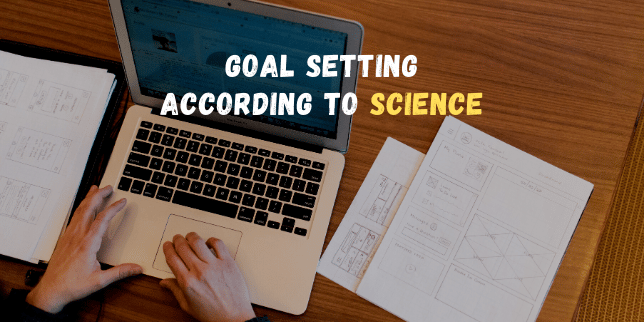
I bet you have heard of the story about a study from Yale University. The story goes like this: In 1953, a group of researchers studied the graduating seniors from Yale University to determine how many of them had specific written goals for their future.
As it turned out, only 3% of the graduating students had written goals. And the rest, the 97% had no clear and specific goals and plans for their future.
And 20 years later, the researchers did a follow-up surveyed on the group of students from the class of 1953. Guess what the researchers discovered?
The 3% of students who had written goals had accumulated more personal financial wealth than the other 97% of the class combined.
Interesting story, but the thing is that the study did not take place. This story has been revolving in the personal development industry for years, but it is a myth. You can read more about the study from this article.
Now, the Yale University study in 1953 never happened. But that doesn’t mean that goal setting isn’t working.
How to Set and Achieve Your Goals According to Science
Dr. Gail Matthews, a professor from Dominican University did conduct a study on how goal achievement is influenced by writing goals, committing to goal-directed actions, and being accountable for those actions.
Matthews and her team recruited 267 participants from businesses, organizations, and networking groups. Their aged ranges from 23 to 72, came from across the world like the United States, India, Japan, Belgium, England, and more.
And the participants worked in a variety of industries including entrepreneurs, educators, artists, attorneys, bankers, managers, directors, non-profits, and more.
Dr. Gail Matthews then divided the participants into 5 groups:
Group 1 – Participants were simply asked to think about their goals (what they wanted to achieve over the next 4 weeks) and rate the goals according to their difficulties, importance, motivation, and more.
Group 2 – Participants were asked to write down their goals and rate them.
Group 3 – Participants were asked to follow Group 2 and also to formulate action commitments.
Group 4 – Participants were asked to follow Group 3 and also send their goals and action commitments to a supportive friend.
Group 5 – Participants were asked to follow Group 4 and also send a weekly progress report to a supportive friend.
Well, guess what happened after the end of the study after 4 weeks? Here’s the graph shared by Dr. Gail Matthews’ study:
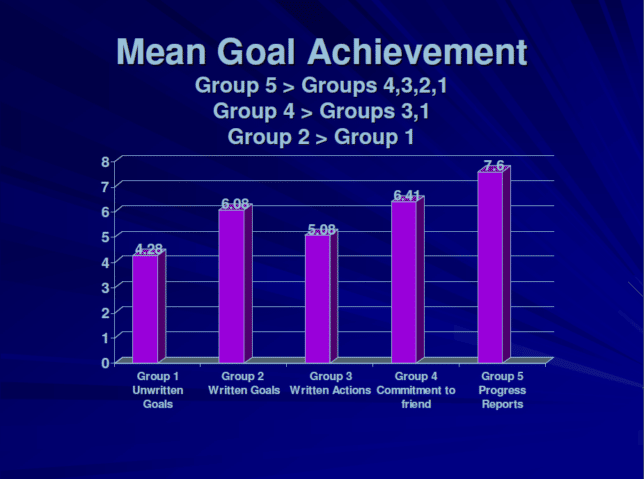
As you can see, the first group of participants who were simply asked to think about their goals, only about 43% of them achieved their goals.
But for group 2, those who were asked to write down their goals, about 61% of them achieved their goals.
What’s worth taking note of is group 5 participants, where 76% of them accomplished their goals.
From the study, Dr. Gail Matthews came to 3 conclusions:
1. The positive effect of accountability was supported: those who sent weekly progress reports to their friend accomplished significantly more than those who had unwritten goals, wrote their goals, formulated action commitments, or sent those action commitments to a friend.
2. There was support for the role of public commitment: those who sent their commitments to a friend accomplished significantly more than those who wrote action commitments or did not write their goals.
3. The positive effect of written goals was supported: Those who wrote their goals accomplished significantly more than those who did not write their goals.
In short, there are 3 essential factors that will greatly influence the outcome of your goals.
And to set and achieve your goals, according to the research done by Dr. Gail Matthews, you’re going to need these 3 factors…
- Write Down Your Goals
- Create Action Commitments
- Hold Yourself Accountable
Hence, let us take a look at each of these factors and learn how you can make good use of them to help you reach your goals in a faster and surer way.
1. Write Down Your Goals
The first thing you want to do to increase your probability of achieving your goals is to write them down.
Writing down your goals improves your chances of reaching them. This is common sense. Why?
Well, when you write down something, you are reminding yourself of what you want. Plus, the act of writing down your goals shows that you are committed to them.
Think about it, if you don’t care about your goals, will you bother to write them down?
Do you know that Scott Adams, the creator of Dilbert comic strip, wrote in his book, How to Fail at Almost Everything and Still Win Big, that he wrote down his goal 15 times a day?
He wrote, “I, Scott Adams, will become a syndicated cartoonist.” And after going through some setbacks and rejections, and through some lucky breaks and coincidences, Scott Adams became the most syndicated cartoonist. He achieved his goal and become a successful cartoonist.
If you want to learn more about how successful people set their goals, check out my guide here: 7 Examples of How Successful People Set Goals and Achieve Them
Therefore, the answer is clear. Write down your goals every day.
In other words, practice daily goal setting. You want to remind yourself of your goals and what you want to accomplish every day.
That’s why people who write down their goals tend to have a higher percentage to accomplish their targets.
Here’s an additional resource to help: The Importance of Daily Goal Setting and How to Do It Right
2. Create Action Commitments
Now, the second factor that will determine the achievement of your goals is action commitment. As you learned from the study from Dr. Gail Matthews, participants who write down their action commitments tend to follow through their plans and put themselves into action mode.
Logically speaking, you can’t just write down your goals and hope that things are going to happen magically.
No, goal setting is not a magic lamp. If you are serious about achieving your goals, you must create a plan and make action commitments to progress forward.
In short, you need to list down your actions plan. You must know what to do to create progress and reach your goals. You can’t leave things up to chances.
Thus, list down your action commitments.
Here’s an example. Let’s say you want to lose weight and get back in shape. So, your action commitments can be something like:
- I will pack a healthy lunch on Tuesday, Wednesday, and Thursday next week instead of eating out.
- I will have healthy spirulina shakes as breakfast on Monday, Wednesday, and Friday next week.
- I will run 10KM at 8 AM this Saturday and Sunday.
- I will workout in the gym for an hour on Tuesday and Thursday after work next week.
As you can see, these are solid, clear, and actionable steps that you can execute.
Once you list down your action commitments, things become crystal clear. You know what to do to progress toward your goals.
That’s why having an actionable plan is important. You don’t want to just write down your goals and then do nothing about them.
Come up with a plan. Having a plan is much better than having no plan at all.
And when you know what you do, you become proactive. You make things happen. You don’t have to wait for things to happen. Create your action commitments and make your goals a reality now.
Read this to understand more: How to Turn Your Goals into Actionable Plans
3. Create the Accountability
Apparently, it isn’t easy to stick to your plan. Most people will procrastinate and delay their action commitments because they lack accountability.
This is why in Dr. Gail Matthews’ study, the group 5 participants who were required to send a progress report to an accountability partner tend to have the highest percentage in reaching their goals.
And you have to do the same – get an accountability partner.
You want to have someone to monitor your progress. You see, when it comes to achieving your personal goals, you are the only one that is going to hold yourself accountable.
Usually, that isn’t going to work well because there will always be distractions and roadblocks (excuses) that prevent you from taking action and sticking to your plan.
This is why getting an accountability partner cures all.
When you know someone is watching you, you will feel the pressure and tend to be more committed to following through.
Therefore, get yourself an accountability partner. And then commit to your partner that you are going to send a weekly progress report to him or her.
I strongly suggest you read this book, The 4 Disciplines of Execution.
It is one of the best books (with practical steps to follow) on setting and achieving goals. In fact, the book is written based on proven principles, not theories.
And one of the disciplines from the book shares about creating a cadence of accountability.
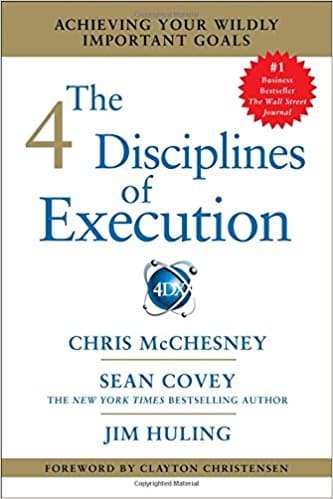
Now, getting an accountability partner doesn’t need to be complicated. You just need to get someone willing to support you and encourage you to make progress.
Once you have a partner to keep you accountable, you will make sure you do as you have committed. That’s how you create results and achieve your goals.
3 Practical Goal Setting Tips that Actually Work
By now, you should have learned everything you need to know about how to set empowering goals and achieve them.
However, before we end this ultimate guide, I would love to share with you 3 more goal setting tips that will help you even more in making sure that you reach your goals.
So, are you ready? Here they are…
1. Focus on the Lead Measures
First, most people have no idea what are lead measures. When we talk about setting our goals, there are 2 measures we need to understand:
- Lag measure, and
- Lead measure.
What are lag measures? They are the goals that most people set. For example:
- To increase 20% of sales
- To make an additional $100,000 profit
- To lose 10 pounds in 3 months
Lag measures are the measures that you can’t influence. They are called lag measures because by the time you see them, your action that drove them is already passed. And you can’t do anything to fix them.
Lag measures are important, but they are lagging. They are not influenceable as compare to lead measures.
Just like when you receive the sales report for the month, it is too late to do anything to change the number.
But lead measures are different. Lead measures are metrics that are influenceable. Meaning, you can act, execute, and work on them.
Here are some examples of lead measures:
- Number of hours working out in the gym
- Number of contents published on the website
- Number of out of stock items in a retail store
If you notice, lead measures are the measures that drive lag measures.
In other words, if you achieve your lead measures, you will achieve your lag measures.
Here’s an image to help you understand the 2 measures better. In fact, I have published a complete guide on understanding both the lead and lag measures. You can check out the guide here, How to Use Lead and Lag Measures to Achieve Your Goals.
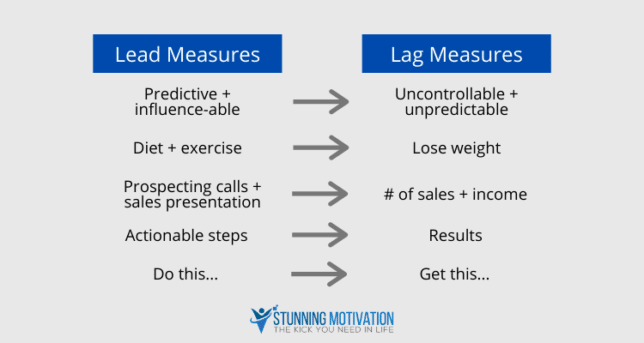
Here’s the thing, most people set goals using lag measures and all they do is focus on the lag. This isn’t going to work.
For instance, if your goal is to build a profitable blog, you may set a goal using a lag measure such as “to collect 1,000 email leads from your blog”. But focusing on this lag measure isn’t going to help.
What you need to do, instead, is to set and focus on lead measures – metrics that will influence your lag measure.
And in this case, if you want to collect 1,000 email leads, what do you need to do? Well, you can choose to publish every day on your blog.
Hence, your lead measure is “to publish every day on your blog”.
Now, if you publish every day on your blog, you will eventually build the traffic you want and attract the visitors to your blog. And you will successfully collect 1,000 email leads from your blog.
Can you see the difference between lag and lead measures?
What you want to do is to focus and work on your lead measures, not the lag.
If your goal is to lose weight and get back in shape, one of your lead measures is to exercise. Say you have committed to exercising for 30 minutes every day. And as long as you make sure you execute this lead measure, you will eventually lose the additional fat and get back in shape.
Do you get that? Focus on the lead measures.
2. Measure Your Progress
“If you can’t measure it, you can’t manage it.”
Peter Drucker
Read the above quote again from the management legend, Peter Drucker. Whatever you want to improve or change, it needs to be measurable.
If you can’t measure it, you can’t manage it. Simple as that.
And when it comes to setting and achieving your goals, you need a system to measure your progress too.
If you don’t know how you’re doing, how can you tell if what you do is working forward or backward from your goals?
Hence, this is why coaches use complicated scoreboards or measurement systems to track the athletes’ performance. The same in business, your boss will want to know the sales performance and that’s why they created sales charts and other measurement systems to track the company’s sales.
When you measure, you know what works and what doesn’t. And when you know what works, you can put in more energy to work on it. Meanwhile, if you know what isn’t working, you can then either improve the strategy or formulate a new one.
This is why tracking and measuring your goals are important.
If your goal is to run faster, how do you know if you are improving and getting there? Well, you track your performance. When you are in practice, you track your speed, how many kilometers you have run, your breathing, your blood pressure, and much more.
If you don’t track, you will never know if you are on track.
Furthermore, measuring your progress makes you feel committed and the process itself is a good reminder for your goals.
People who don’t track their goals and are those who don’t care about them. Hence, they are going to fail.
So, how do you track and measure your goals? Here are a couple of techniques you can use:
- Create a compelling scoreboard
- The Calendar Method
- A Checklist
- A weekly or monthly review
I suggest you read this article to understand better: How to Measure Your Progress to Effectively Achieve Your Goals.
3. Build Action Habits
Now, some of your goals are short-term, but I bet most of your more exciting goals are long-term. They need you to focus and take action consistently, day-in, and day-out. So, how are you going to make sure you stick to your plan and be consistent?
The answer is to develop action habits.
Habits are powerful because once you have developed them, they become automatic. You will do them without much resistance.
Think about smoking. Why do people smoke? Well, at first, it could be because of curiosity, but if you repeat it long enough, it becomes a habit.
And when smoking becomes a habit, it can be challenging to get rid of it. You will smoke whenever you are triggered.
Rather than making smoking your habit, make your goals your habit. Learn to develop habits to help you make progress and achieve your goals.
And the best method to develop an action habit is through the use of these 4 steps as suggested by James Clear in his best-selling book, Atomic Habits:
1. Cue
All habits start with a cue or a trigger. For instance, when your phone vibrates, you check it out. When you drive by McDonald’s, you turn in and grab something to eat. Those are triggers. They are the cues that trigger you to do something.
2. Craving
According to James Clear, the cue can only take us so far. We need to have the craving that leads us to the response or action. For example, when you see the treadmill, it doesn’t motivate you to run on it unless you have a craving for it.
3. Response
The response is your action. A habit cannot form until you have taken some form of action and repeat them enough times. To build a habit, make it easy to perform the behavior. To get rid of a habit like smoking, make it difficult to perform. For instance, keep your cigarettes out of your sight or store the lighter in a drawer and lock it.
4. Reward
Now that you have performed the action, to make the habit stick, you must make it enjoyable and satisfying. You have to reward yourself for the behavior. Furthermore, when you have an irresistible reward, you tend to look forward to performing the habit and get the reward. Check out this article: How to Reward Yourself for Your Hard Work and Effort.
Building an actionable habit isn’t easy, but it is not complicated either. I strongly suggest you read this life-changing book from James Clear:

4. Start Small and Leverage the Success Cycle
If you are serious about achieving your goals, you need to commit to taking small and consistent actions every day.
You see, you’re not going to lose weight by hitting the gym only once. And you’re not going to become a great speaker if all you do is practice your speech just once.
I love the way how Tony Robbins explains the success cycle.
He said that we all have a certain belief and a certain potential in us. And because of what we choose to believe, we take action according to our potential.
And as we take action and do something, we will get results. Whether it is a good result, a bad one, or no result, it is an outcome. And our outcome will affect our beliefs again.
Take a look at the picture. This is how the success cycle works:
PICTURE SUCCESS CYCLE
Can you see how the success cycle works right now?
Belief –> Potential –> Action –> Result
Here’s an example of how the success cycle can work AGAINST you:
Lousy beliefs –> low potential –> less or no action –> less or no result –> even more lousy beliefs –> even lower potential –> even less action –> failure
Everything works like a chain-link that affect and influence each other. And here’s a good example of how the success cycle is working FOR you:
What you believe –> you have the potential and maybe you can do it –> you put in some effort –> receive small positive results –> have confidence and build stronger beliefs –> exert more potential –> take more actions –> receive even better results –> continue to build more success.
The most important question you should ask yourself right now is this, “How can I make the success cycle to work in my favor?”
Here’s the answer: Start small, get positive results, build your confidence, and strengthen your beliefs.
Change is necessary, but that doesn’t mean that you should do everything all in one go. You can always start small and grow.
We are wired to resist change. And when you try to do something too drastic and too much, it will backfire and make you fall back to your original state.
What you have to do is to take small actions that will give you positive results. When you receive positive results and you see small successes, you gain confidence and momentum.
As a result, you started to see the possibility that you can do it. This strengthens and builds your belief system. And when you develop a stronger belief, you will tap into higher potential and take more action.
And with more action comes more and better results. And it keeps going.
This is why you should always start small.
And don’t get me wrong. I’m not saying that you should dream small or even try to set small goals. I’m saying that you should start small with tiny actions.
Rome was not built in a day, my friend. Apple did not turn out to be a multi-billion company overnight and Elon Musk did not start with Tesla and SpaceX straight from the beginning.
5. Condition Your Goals to Your Mind
Yes, condition the goals you want to achieve to your mind. When something becomes unconscious, you will do it automatically, without having to push yourself for it.
Here’s what you can do to condition your goals to your mind:
- Read and learn as much as possible about your goals. Make it a commitment to read at least 2 books a month on the subject you want to improve.
- Attend seminars and workshops. Take learning to the next level and improve yourself to become better.
- Create vision boards so that every time you see them, you will be reminded of your visions and your goals.
- Make use of affirmations. Just like positive self-talk, affirmations can be powerful if you program it to your mind correctly. (Check out this guide: 5 Simple Rules How To Make Your Affirmations Work)
- Network with others who have shared similar goals. Better yet, make them your accountability partner so that you can hold each other accountable and make sure both are making progress.
- Get a mentor when possible. A mentor can 10X your results and success because they are the ones that have accomplished what you desire.
- Practice visualization and see the success you want in your head. Studies have discovered the visualization works because your neurons (your brain cells) interpret your mental images as real-life action.
The key is to immerse yourself in activities that relate to your goals. The more you talk about your goals and think about them, the more deeply rooted they will become in your head.
Just like if you keep listening to the same song over and over again, eventually, you can sing the song even without having to look at the lyrics. It’s all been conditioned into your mind.
That’s exactly what you want to do with your goals. Every day, do something related to your goals. Let your actions consciously program the success you want into your subconscious mind.
Introducing Goal Setting Formula
My friend, I want to take this opportunity to share with you a program that I have created, called Goal Setting Formula Masterclass.
I have been blogging since 2007 in the personal development industry. And today, I’m proud to say that I’m a full-time blogger who is active in motivating and inspiring people to pursue their dreams and achieve their goals.
Over the years, I have compiled my knowledge on setting and achieving goals into a program and I hope that people will be inspired to take solid actions and accomplish what they really want in life.
Hence, I created a training course called Goal Setting Formula. It is a masterclass that aims to equip you with the best practice for setting goals and how to achieve them.
Many people want to be successful. They want to live a better lifestyle and they want to make their dreams a reality.
Unfortunately, most don’t take goal setting seriously. They thought that all they need to do is to just think about what they want to achieve in their head and success will come to them magically.
Nope. Things aren’t going to happen this way. Success isn’t happening through magic. Success is created through a carefully crafted plan.
This is how Goal Setting Formula can help. Thus, I suggest you enroll in the training.
It is time to change your life and take the success you want to a higher level.
When you know how to set goals, create an actionable plan, stick to the plan, and improve whenever necessary, guess what, nothing can stop you.
This is why goal setting is powerful. When you master the skill, you can achieve anything you want in life.
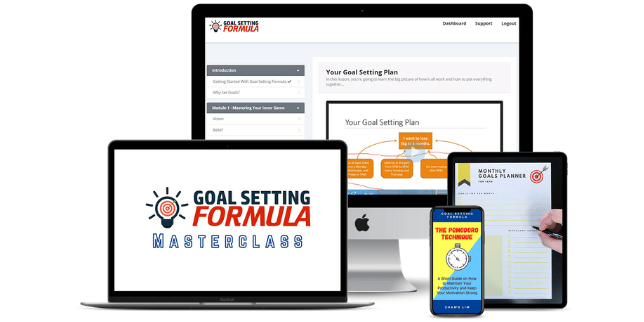
==> Go here to learn more about Goal Setting Formula
I hope you enjoy this ultimate goal setting guide.
Let me know what you think. Leave your comment below and share this page to inspire others. Cheers.



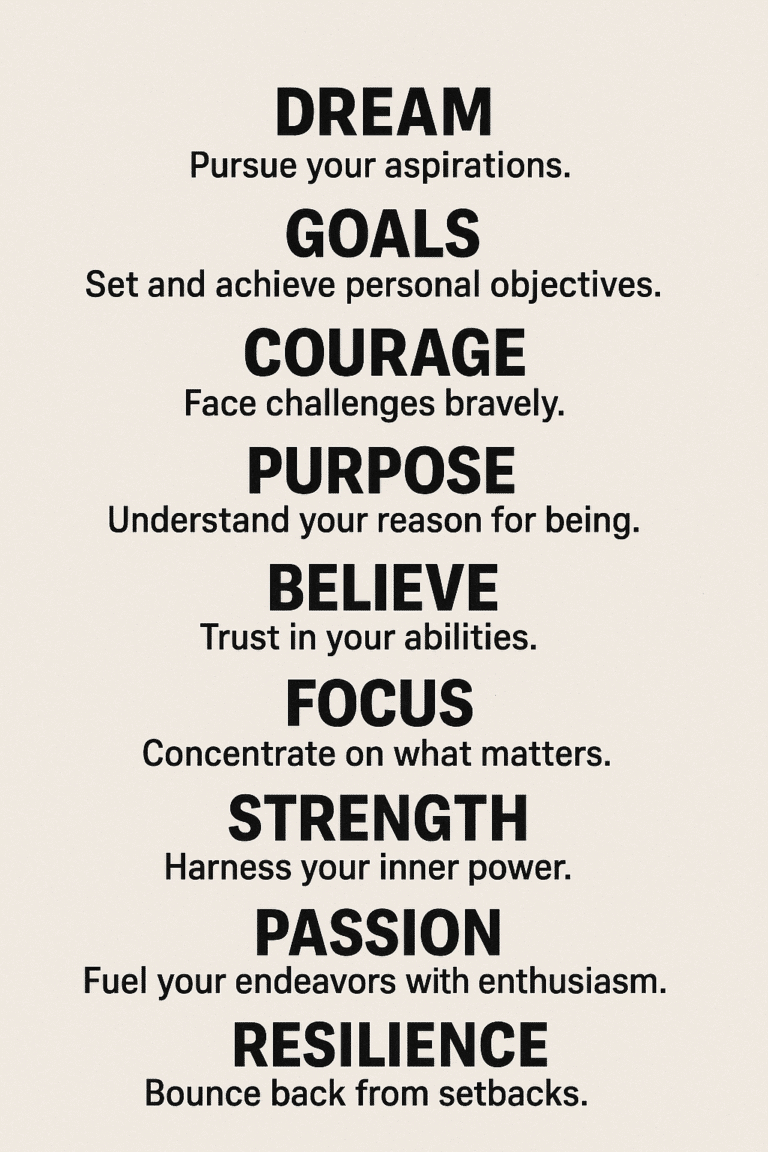





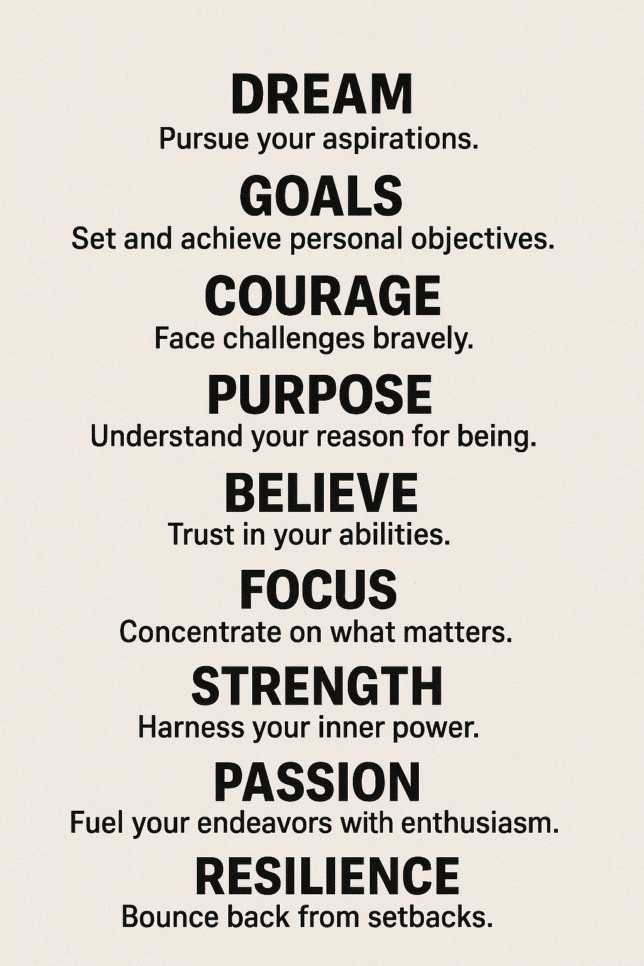





19 Responses
This is a great article. It is important to understand how to set goals for yourself and accomplish them. I love how you outlined all the ways to help you better set and achieve goals in your life. -Ryan
Hello Ryan, thank you for your support and for leaving your comment here.
Well, I do hope that this guide will help more people to understand better about setting and achieving their goals 🙂
Thank you very much for your wonderful advise. I Shall use them in my life.
Great, application is true power… 🙂
I was really inspired reading your blog. Mind sharing what books to read for further personal development? Right now almost done with millionaire fastlane. I would really appreciate if you can feedback. Thank you so much!
Hey Kate, great to hear that. Millionaire Fastlane is indeed a great book. And if you are looking for other great books to read, here’s my recommendation:
http://stunningmotivation.com/success-books/